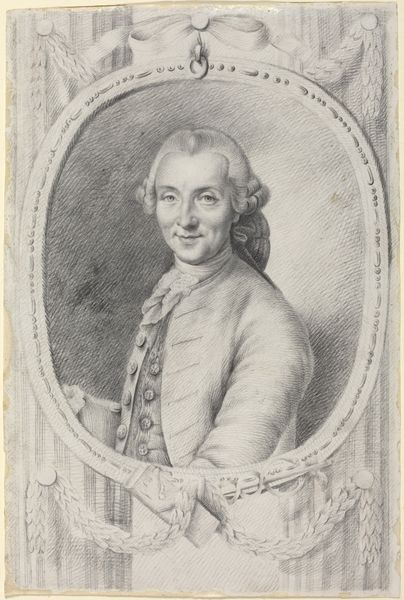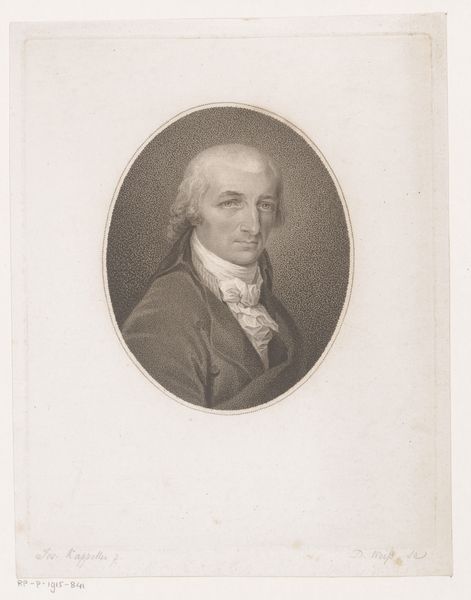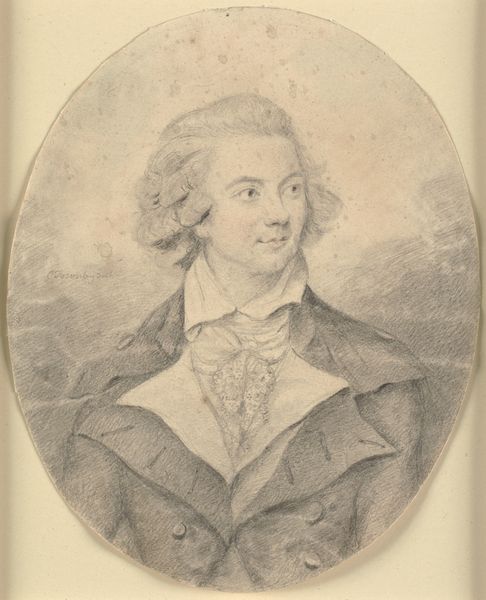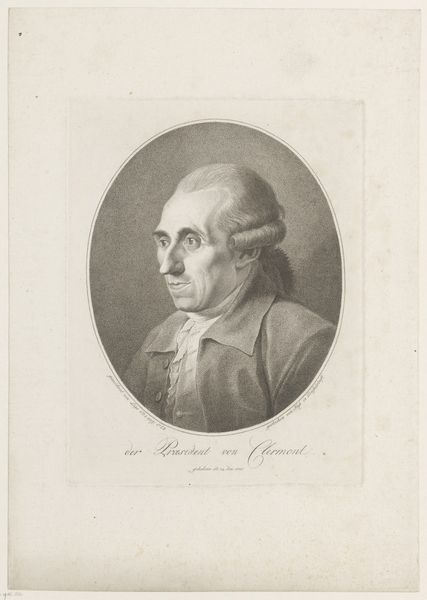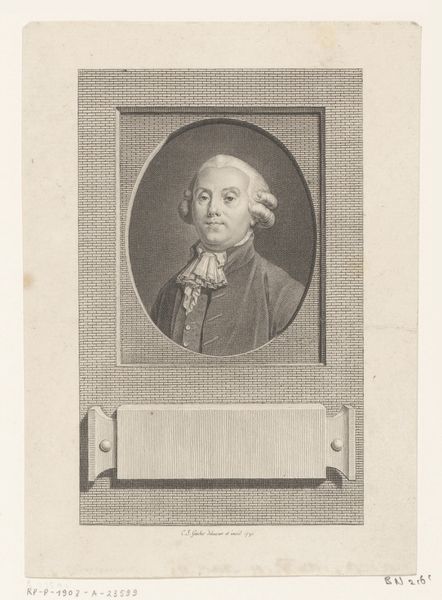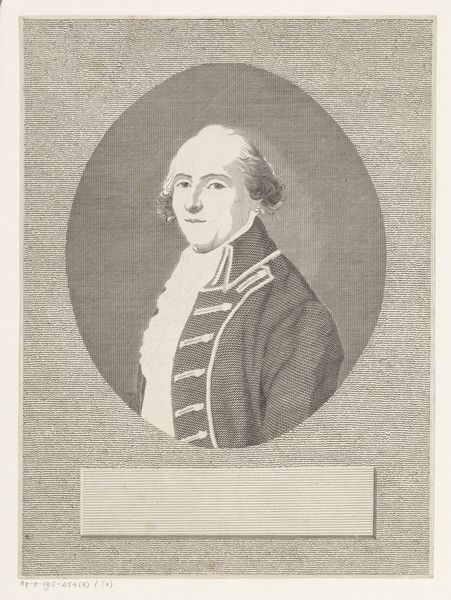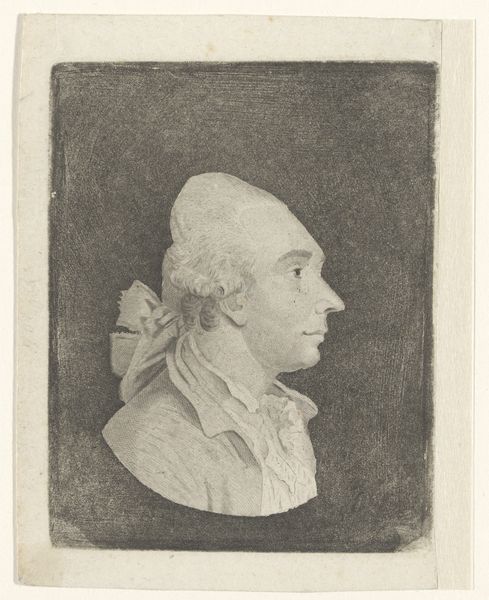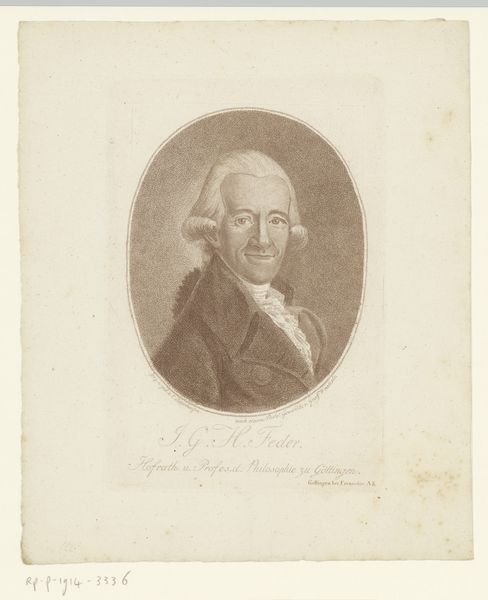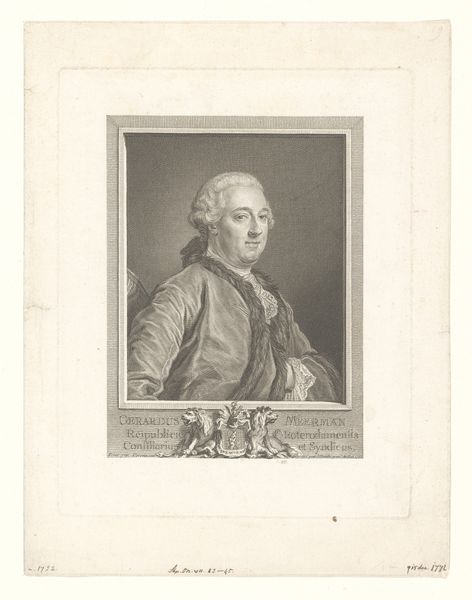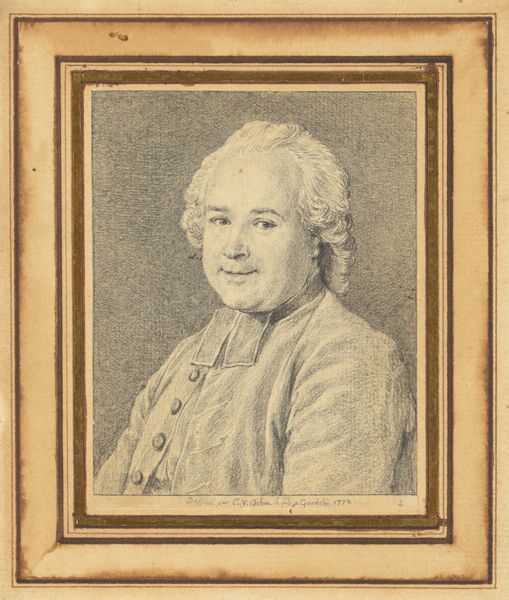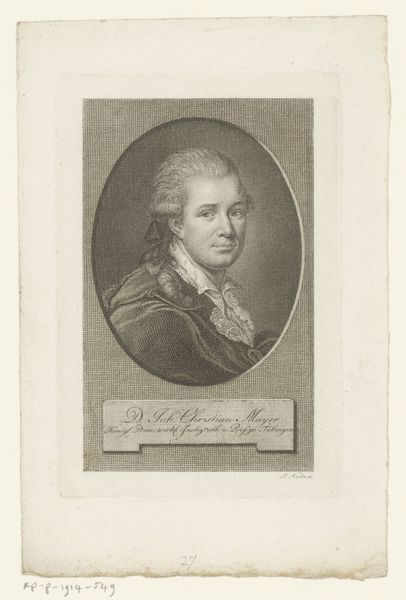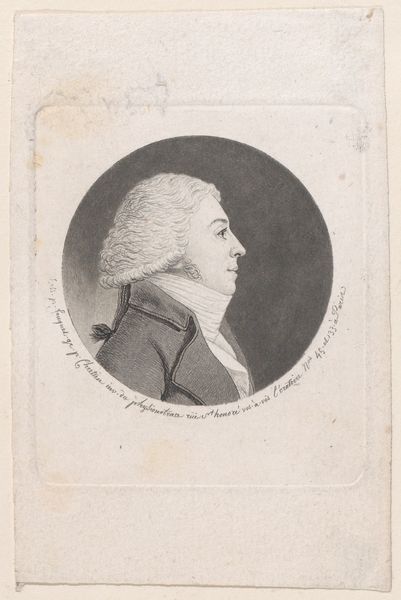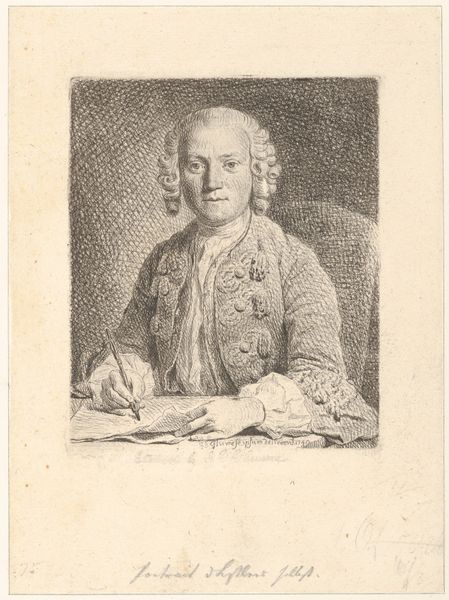
drawing, coloured-pencil, dry-media, pencil
#
portrait
#
pencil drawn
#
drawing
#
coloured-pencil
#
pencil sketch
#
classical-realism
#
dry-media
#
pencil drawing
#
pencil
#
portrait drawing
Dimensions: overall: 15.7 x 12.8 cm (6 3/16 x 5 1/16 in.)
Copyright: National Gallery of Art: CC0 1.0
Curator: Here we have a portrait attributed to John Hoppner, titled "James Nares," created around 1775 using pencil and colored pencil. Editor: The soft, almost hesitant lines give it a feeling of intimate observation. The limited palette reinforces that sense of quiet contemplation. Curator: Portraits in this era often served to project a certain societal standing, to visually encode their subject’s persona for posterity. The powdered wig is a very recognizable symbol of status. Editor: Exactly! Notice how the texture of the wig contrasts with the smoothness of the face. That semiotic interplay points to an age defined by manners. Also the artist creates definition using cross-hatching, but it's minimal and very subtle. Curator: Consider, too, Nares' gaze; there’s a gentle warmth there, inviting connection. He occupies a distinct role within his community and presents his likeness here for posterity. Editor: There's a compelling duality at play with that classical realism you spoke of. We can deconstruct how the circle gives structure, contrasting his asymmetrical position, thus breaking any expectations of what a neoclassical portrait should signify, yet in this imbalance a distinct voice emerges. Curator: True, and there’s a powerful continuity being upheld. The very act of commissioning a portrait such as this reinforced tradition, solidifying one’s identity in a culturally understood visual language. It connects him to a lineage of powerful figures memorialized through art. Editor: It makes you question the status quo of these inherited forms. This pushes towards future eras where identity can be shaped differently; it reveals both history and foreshadowing in form itself. It is in effect a cultural sign. Curator: A visual encoding of a very specific moment, frozen in time. Editor: That is where its staying power resides: In the capacity of the medium, with the delicate lines holding open so many interpretive spaces for us to project into it still today.
Comments
No comments
Be the first to comment and join the conversation on the ultimate creative platform.
